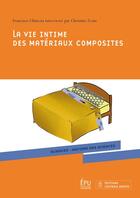-
Date de parution : 28/09/2010
-
Editeur :
Publibook
-
EAN : 9782748356571
-
Série :
(-)
-
Support :
Papier
Résumé:
How long did it take to prove Aristotle's ideas about falling objects wrong? How did science evolvefrom Democritus,the first philosopher to talk about the existence of atoms,to today's theoriesconcerning the universe? Can the world now be explained in the form of equations?This volume -... Voir plus
How long did it take to prove Aristotle's ideas about falling objects wrong? How did science evolvefrom Democritus,the first philosopher to talk about the existence of atoms,to today's theoriesconcerning the universe? Can the world now be explained in the form of equations?This volume - articulated in three parts:I.Classical Physics II.Modern Physics and III.Questionsabout the universe - answers all basic questions concerning the history of physics and physics.Theapproach chosen here is the one adopted by Franscico Chinesta for his Ecole Centrale de Nantescourse.Although the content is targeted at top-level engineering students,this volume also addressesa non-scientific audience,giving everyone a chance to marvel at scientific research.Chinesta's chronological approach allows readers to understand how the world has graduallyrevealed its secrets through scientific observation,hypotheses,counterhypotheses andexperimentation.Meanwhile a whole range of scientific phenomena is explained,from why the skyis blue to what is a black hole.Because of the simple language of the volume and thanks to hundreds of illustrations,physicsbecomes accessible to non-specialists and the latest research development available to all.
Donner votre avis









